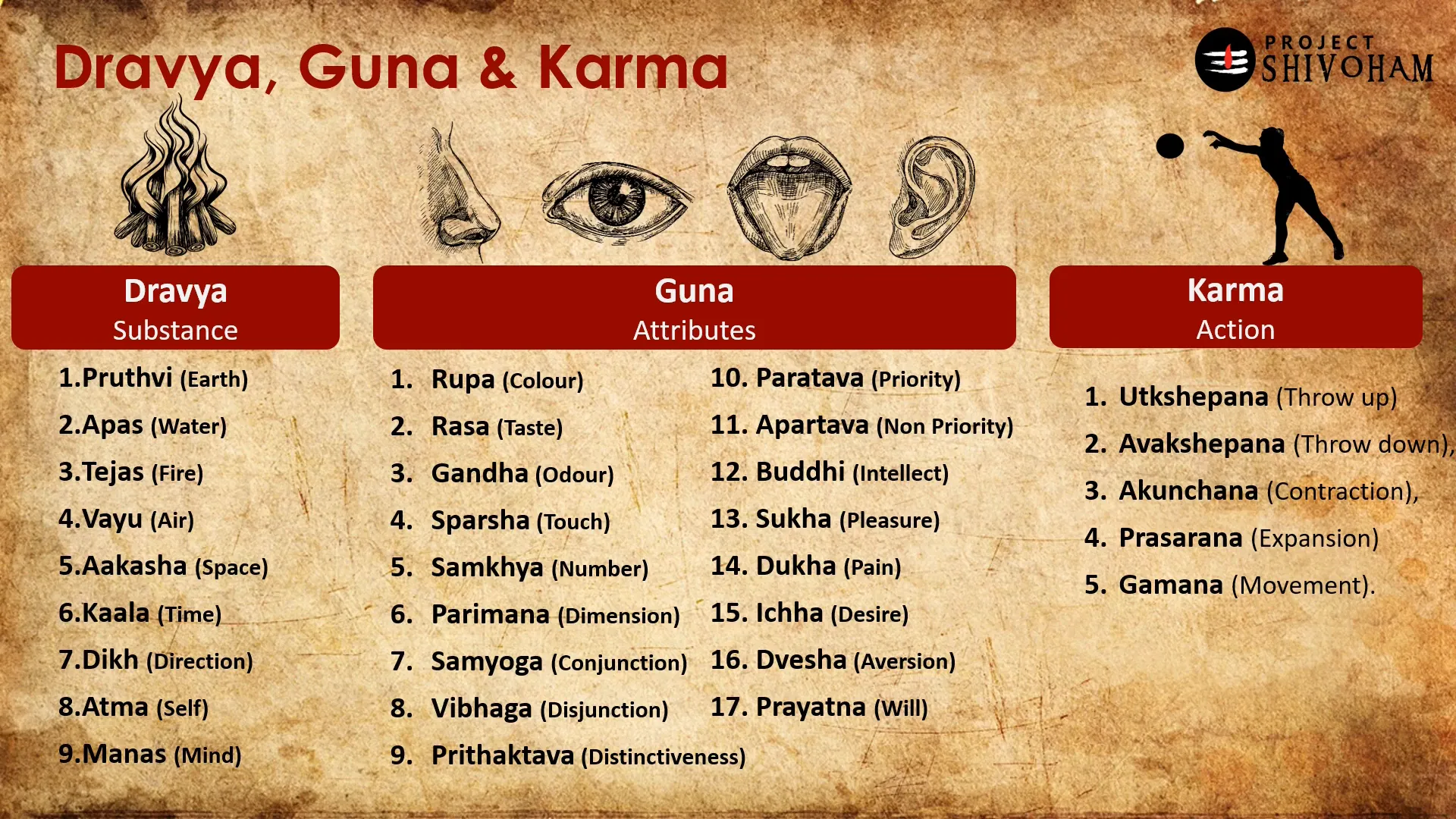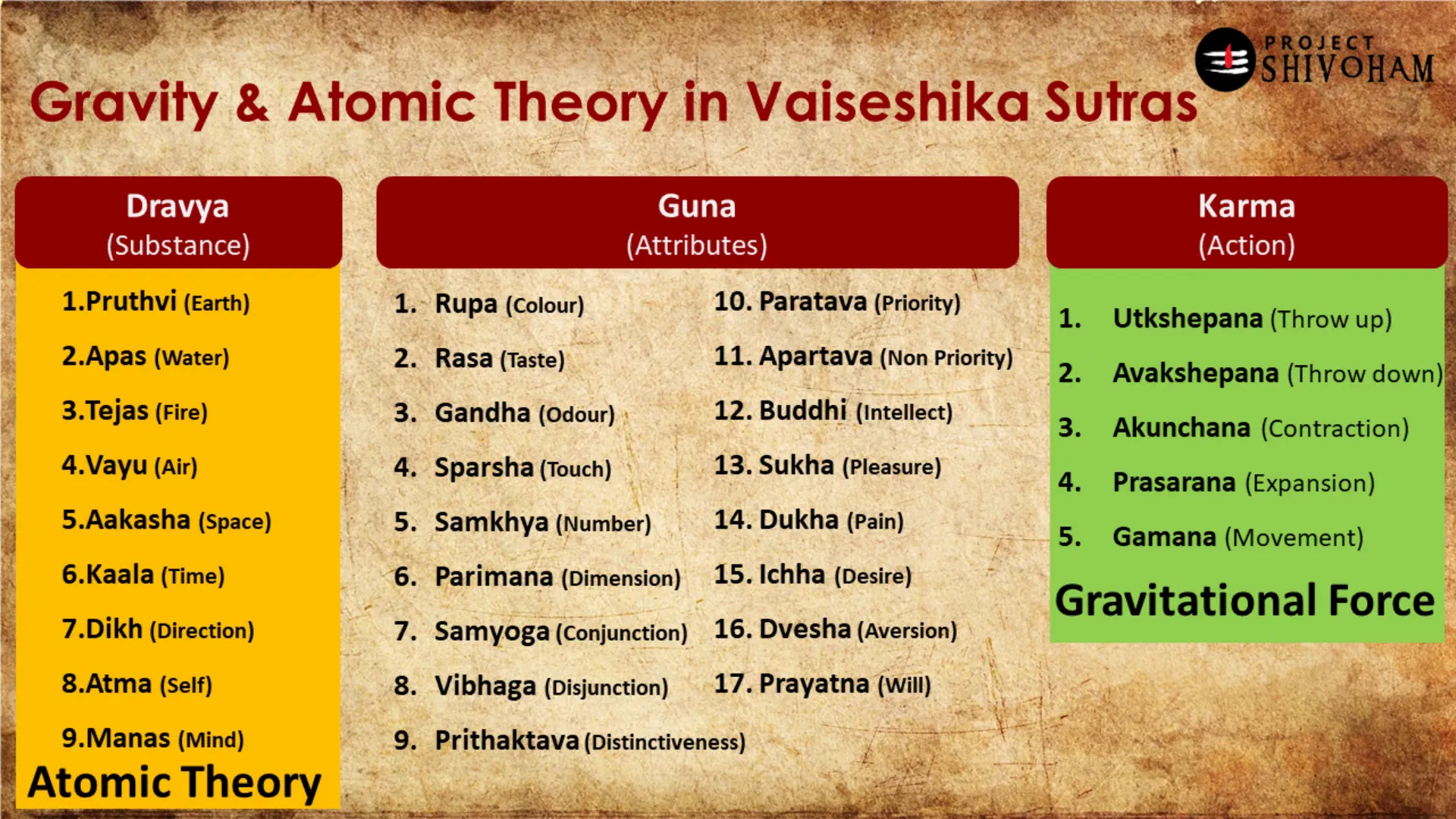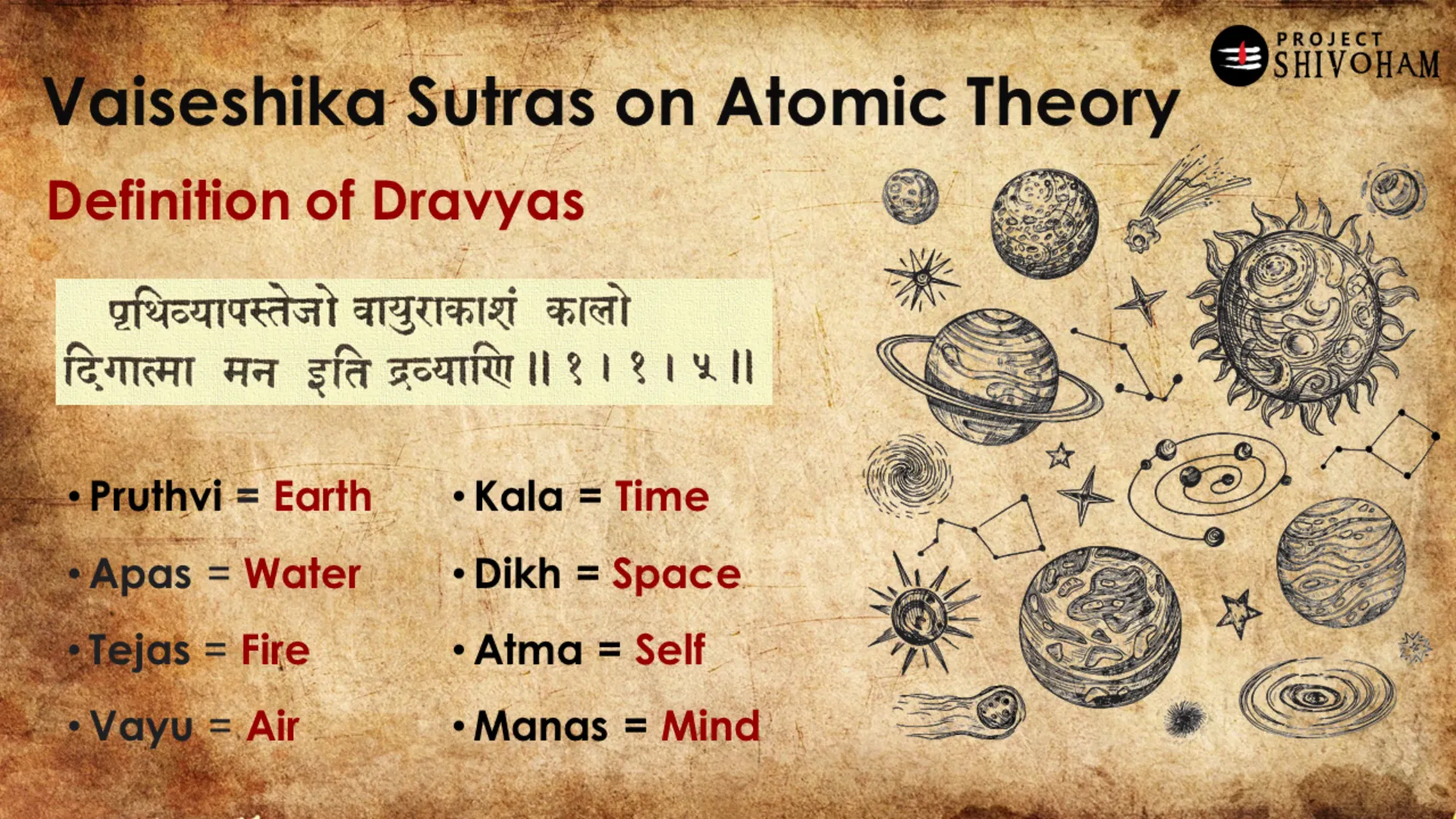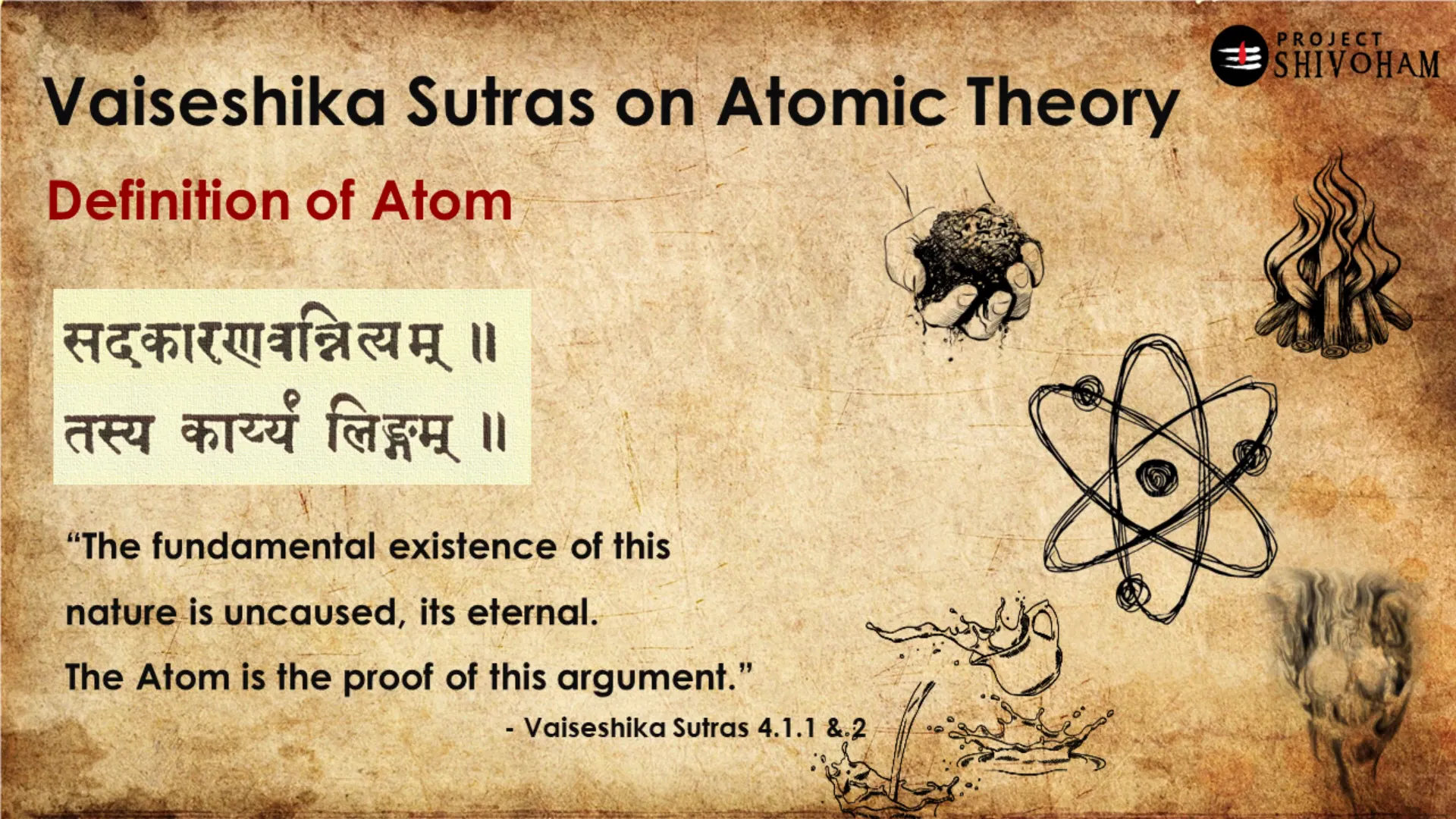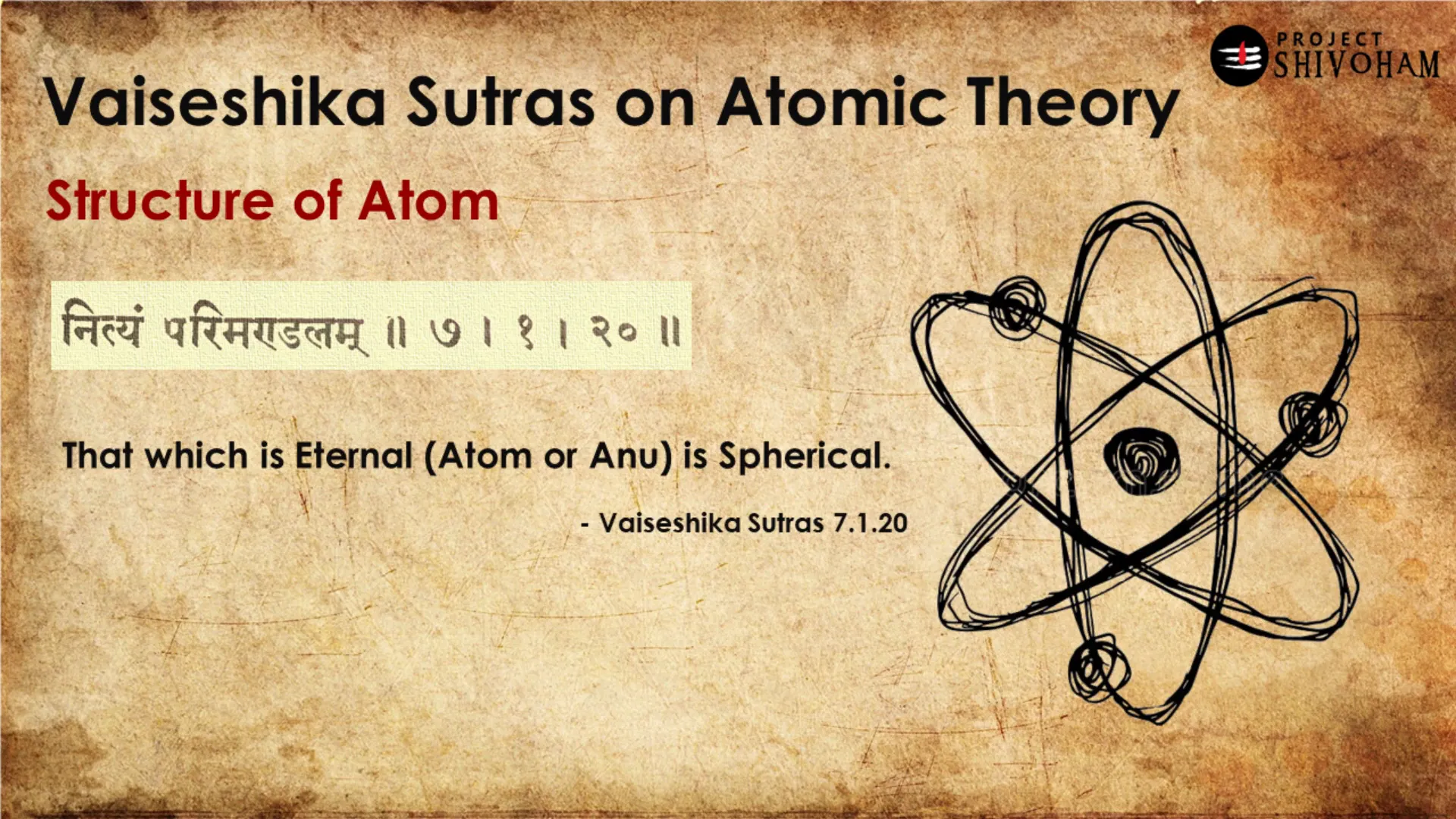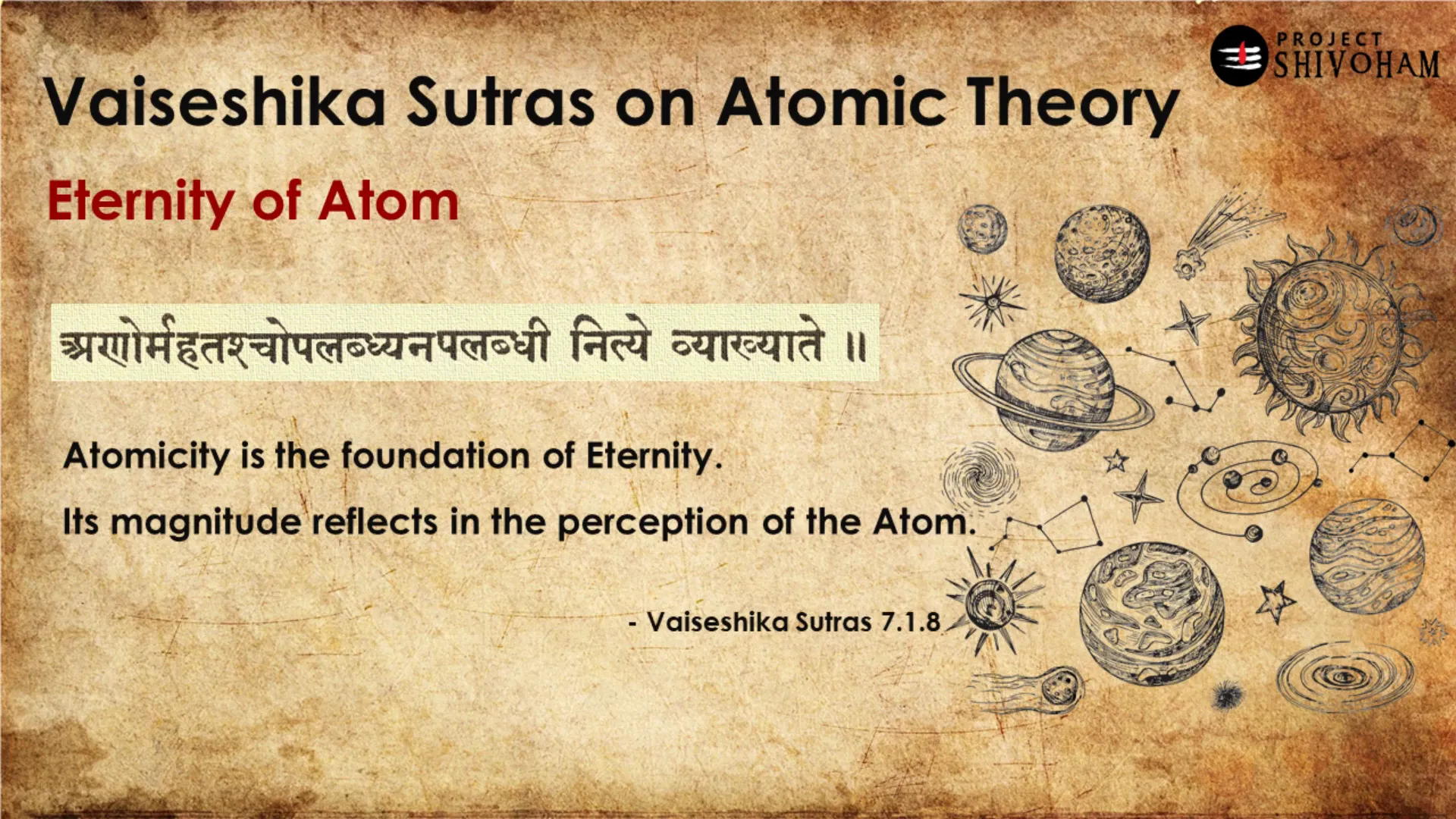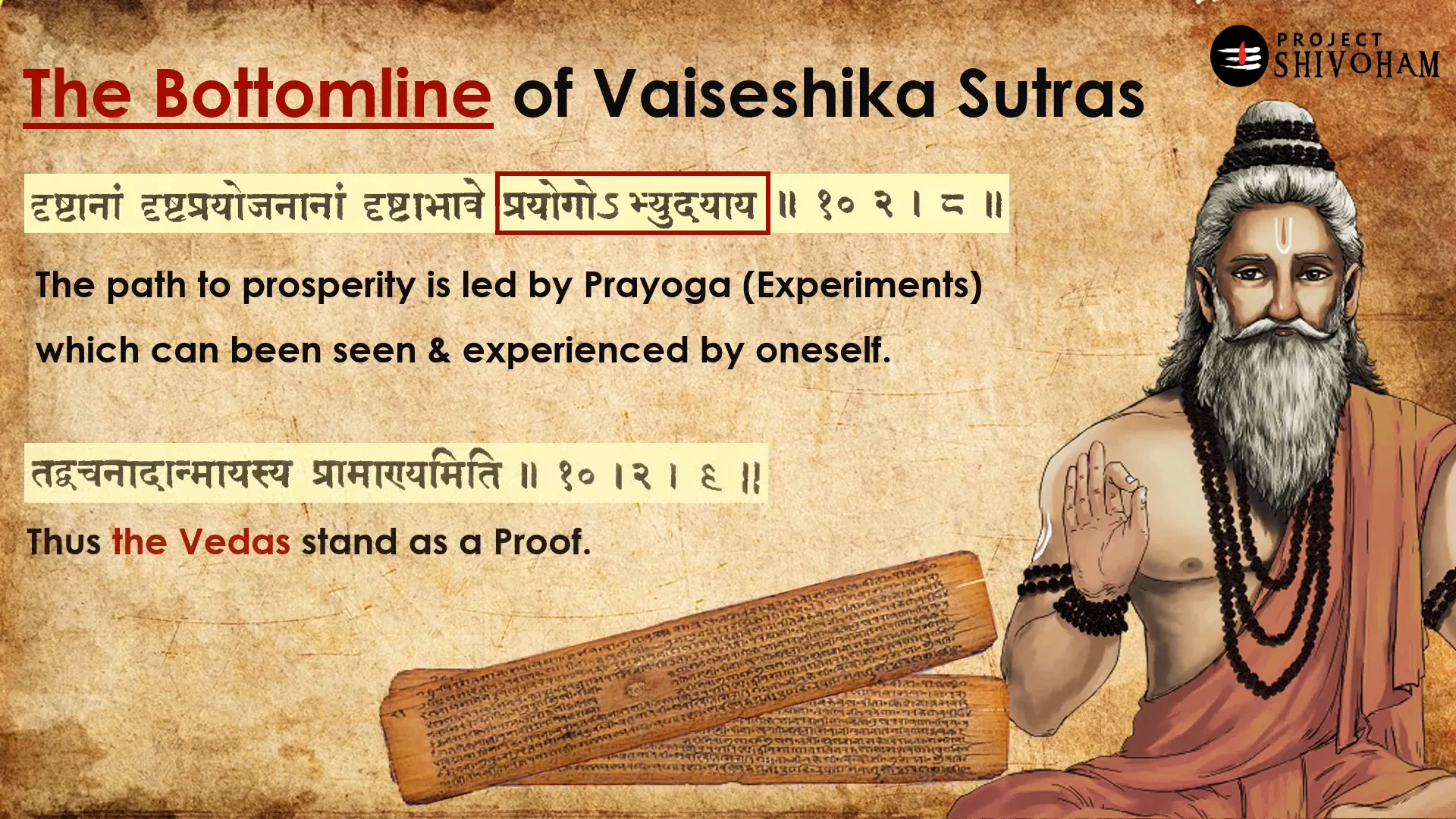Delve into the revolutionary concepts of atomic theory as articulated by Maharishi Kanada in the Vaisesika Sutras, an ancient Indian philosophical text predating Western atomic theories by centuries. This blog explores the profound insights and scientific principles laid out in these timeless teachings, offering a glimpse into the intellectual heritage of India.
Table of Contents
- Introduction to Atomic Theory in Ancient India
- The Mindset of Ancient Indian Philosophers
- Understanding Vaisesika Darsanam
- The Context of Ancient Indian Thought
- Knowledge and Wisdom: The Philosophical Framework
- Astika vs. Nastika Philosophies
- The Four Virtues in Indian Philosophy
- Exploring the Vaisesika School of Thought
- The Structure and Content of Vaisesika Sutras
- Sensory Perception and Interaction with Nature
- The Concept of Atoms and Eternity
- The Interplay of Science and Humanities
- Diving Deeper into the Atom’s Structure
- The Philosophical Perspectives on Existence
- Understanding the Padarthas: Categories of Existence
- Scientific Concepts in Vaisesika Sutras
- The Bottom Line of Vaisesika Philosophy
- Conclusion: The Relevance of Vaisesika Today
- FAQ
Introduction to Atomic Theory in Ancient India
Atomic theory, as we understand it today, is often attributed to modern science. However, ancient Indian philosophers, particularly Maharishi Kanada, laid foundational ideas about atoms and their nature centuries before their Western counterparts. The Vaisesika Sutras provide a remarkable insight into these early theories, positing that the universe is composed of indivisible, eternal particles. This notion challenges the idea that atomic theory is a purely Western invention and highlights India’s rich intellectual heritage.
The Mindset of Ancient Indian Philosophers
The philosophical landscape of ancient India was characterized by a unique blend of spirituality and empirical inquiry. Philosophers like Maharishi Kanada approached the study of nature with a mindset that sought to understand the fundamental principles governing existence. They were not merely speculating; they were engaging in rigorous observation and reasoning. This empirical approach is evident in the way Kanada articulated his concepts, emphasizing experience as a pathway to knowledge.
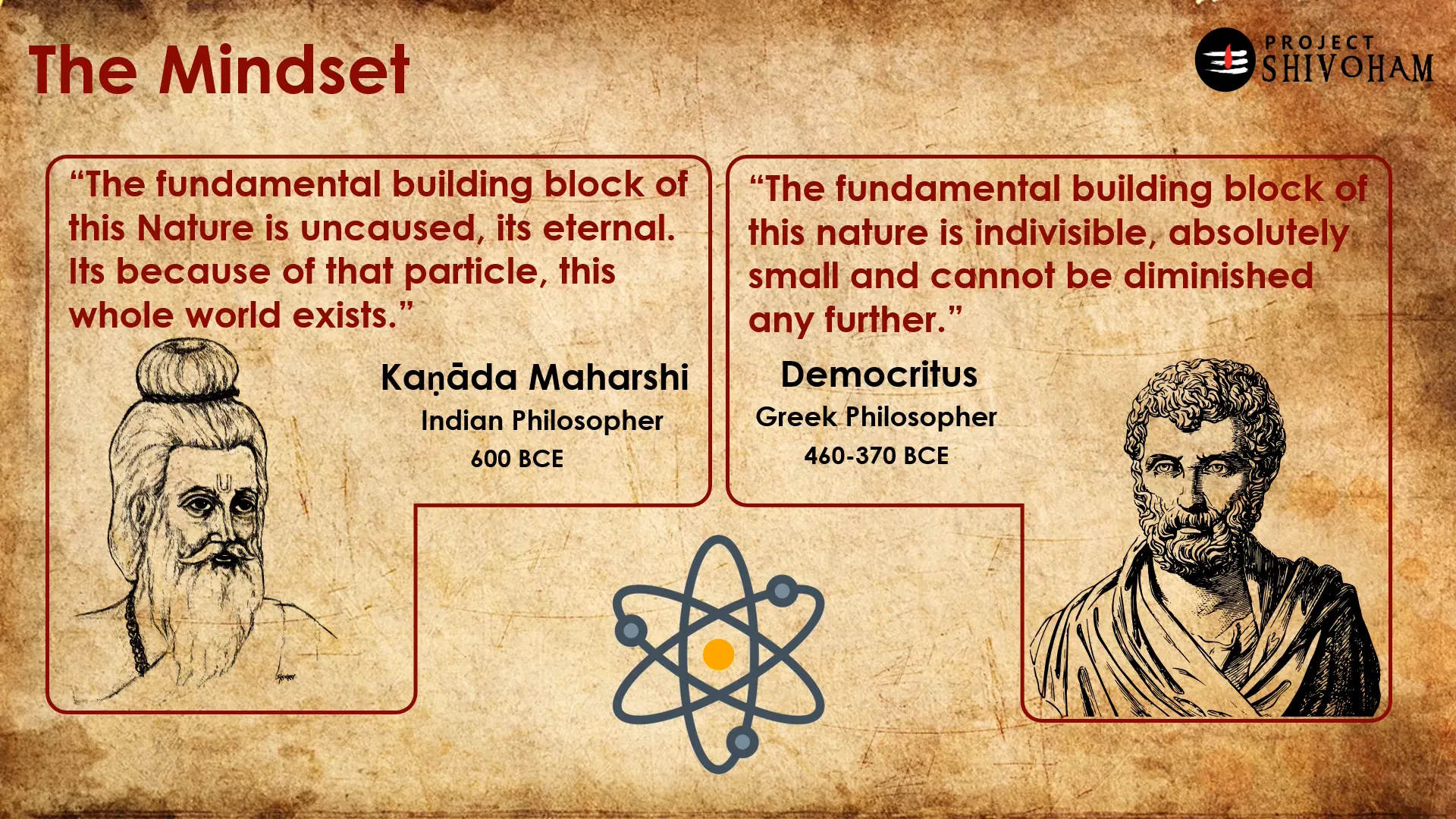
Understanding Vaisesika Darsanam
Vaisesika Darsanam, attributed to Maharishi Kanada, is one of the six orthodox schools of Indian philosophy. It primarily focuses on categorizing and analyzing the elements of the universe. The core tenet of Vaisesika is that all matter is composed of atoms, which are eternal and uncaused. This school of thought distinguishes itself by its methodical classification of substances, qualities, and actions, providing a comprehensive framework for understanding the physical world.
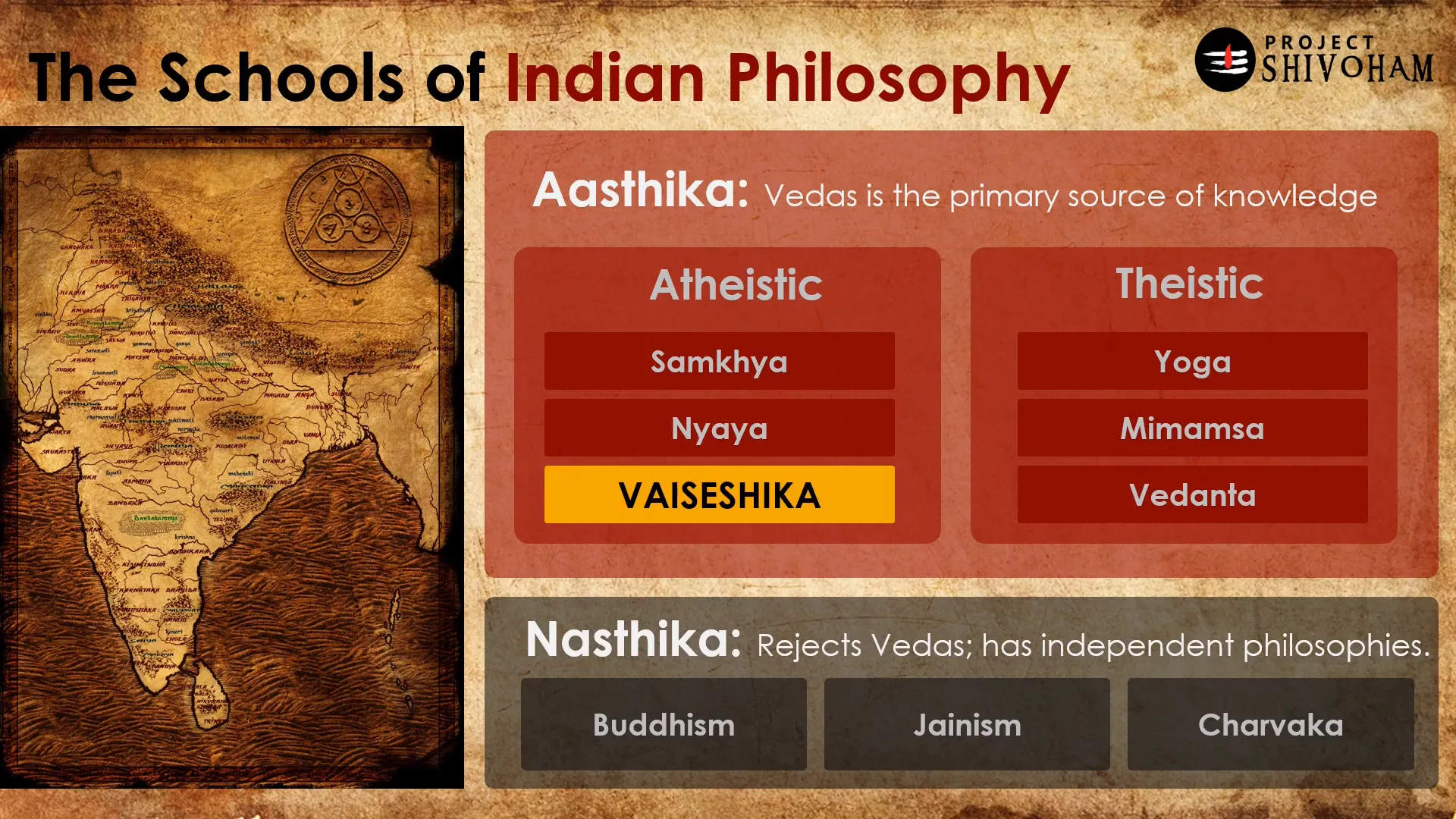
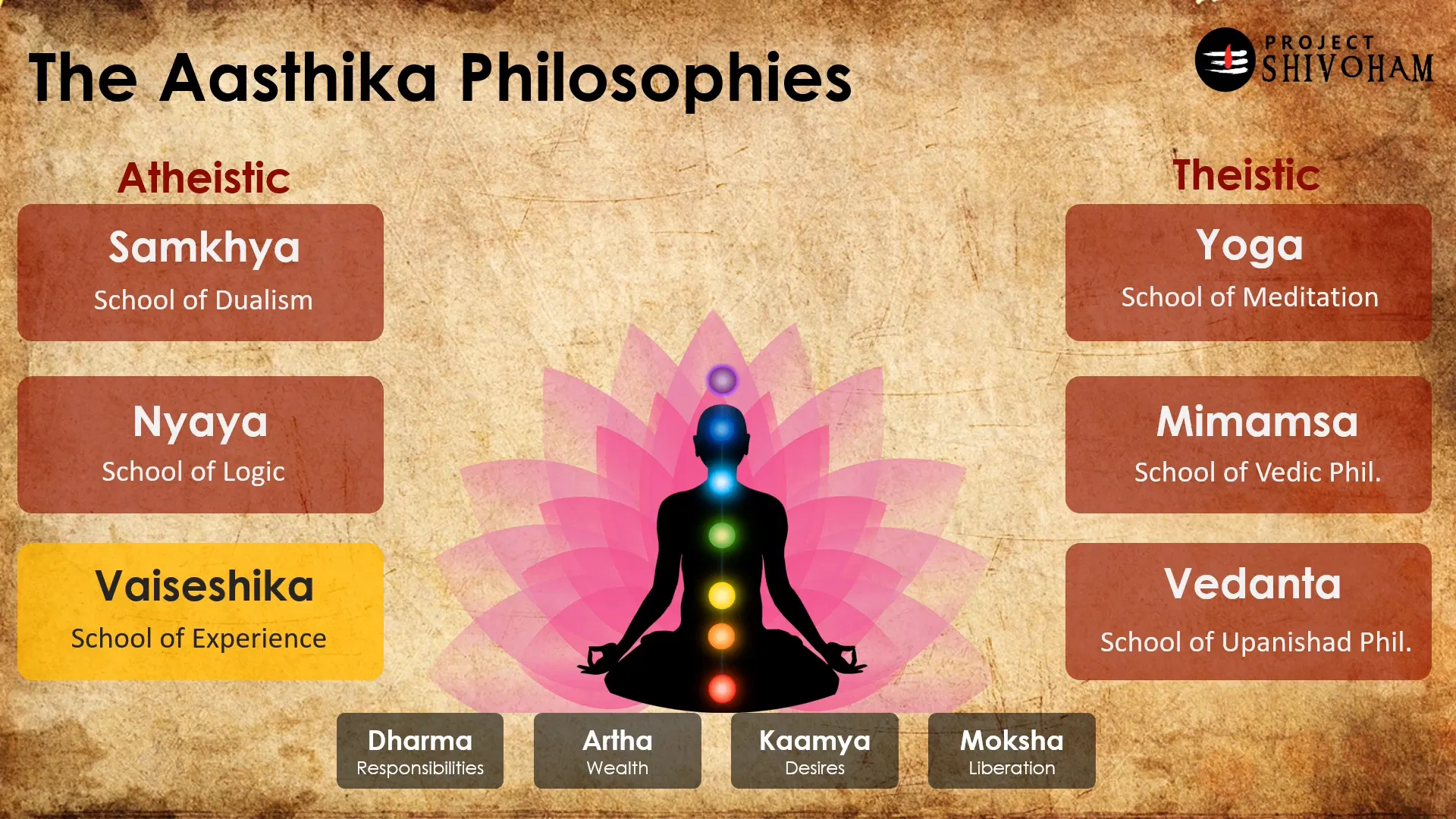
The Context of Ancient Indian Thought
To appreciate the significance of Vaisesika, one must consider the broader context of ancient Indian philosophy. The philosophical discourse was not isolated; it was part of a rich tapestry of thought that included discussions on ethics, metaphysics, and the nature of reality. The interplay between various schools—Astika and Nastika—further enriched this landscape, allowing for a diverse exploration of ideas. Vaisesika, as an atheistic school, offered a rational framework that contrasted with theistic philosophies, emphasizing empirical observation over divine authority.
Knowledge and Wisdom: The Philosophical Framework
In ancient India, knowledge (jnana) and wisdom (vijnana) were not merely academic concepts; they were intertwined with the pursuit of a meaningful life. Philosophers believed that true wisdom arises from the application of knowledge in a practical context. The Vedas served as the foundational texts, guiding philosophers in their quest to understand the cosmos. This philosophical framework encouraged a holistic approach to learning, where knowledge was not an end in itself but a means to achieve a higher understanding of existence.
Astika vs. Nastika Philosophies
The distinction between Astika and Nastika philosophies is crucial in understanding the philosophical landscape of ancient India. Astika schools, such as Vaisesika, accept the authority of the Vedas and emphasize a rational understanding of the universe. In contrast, Nastika schools, like Buddhism and Jainism, reject Vedic authority, presenting alternative paths to understanding reality. This dichotomy fostered a vibrant intellectual environment, where diverse viewpoints coexisted and challenged one another, ultimately contributing to the evolution of thought in ancient India.
The Four Virtues in Indian Philosophy
Central to the philosophical discourse in India are the four virtues known as Chaturvidha Purusharthas: Dharma (righteousness), Artha (wealth), Kama (desires), and Moksha (liberation). These principles guide individuals in their pursuit of a fulfilling life. Each of these virtues plays a crucial role in shaping one’s actions and decisions. The Vaisesika school integrates these virtues into its framework, proposing that the understanding of atomic theory and the nature of reality can lead to a deeper comprehension of these fundamental goals in life.
Exploring the Vaisesika School of Thought
The Vaisesika school is not just a theoretical construct; it offers practical insights into the nature of reality. By classifying substances, qualities, and actions, Vaisesika provides a structured approach to understanding the universe. The concept of dravya (substance) is foundational, categorizing elements such as earth, water, fire, and air. This categorization extends to the attributes (guna) and actions (karma) associated with these substances, creating a comprehensive system that reflects the complexity of the natural world.
Furthermore, Vaisesika’s emphasis on experimentation and experience as pathways to knowledge resonates with modern scientific methodologies. The school advocates for a hands-on approach to learning, encouraging individuals to engage with the world around them. This perspective not only enriches philosophical inquiry but also aligns with contemporary scientific practices, demonstrating the timeless relevance of Vaisesika’s teachings.
The Structure and Content of Vaisesika Sutras
The Vaisesika Sutras, composed by Maharishi Kanada, consist of 373 aphorisms divided into ten chapters. Each sutra is a concise statement, yet the depth of meaning within each one is profound. The structure is designed to facilitate understanding of complex concepts through succinct expressions.
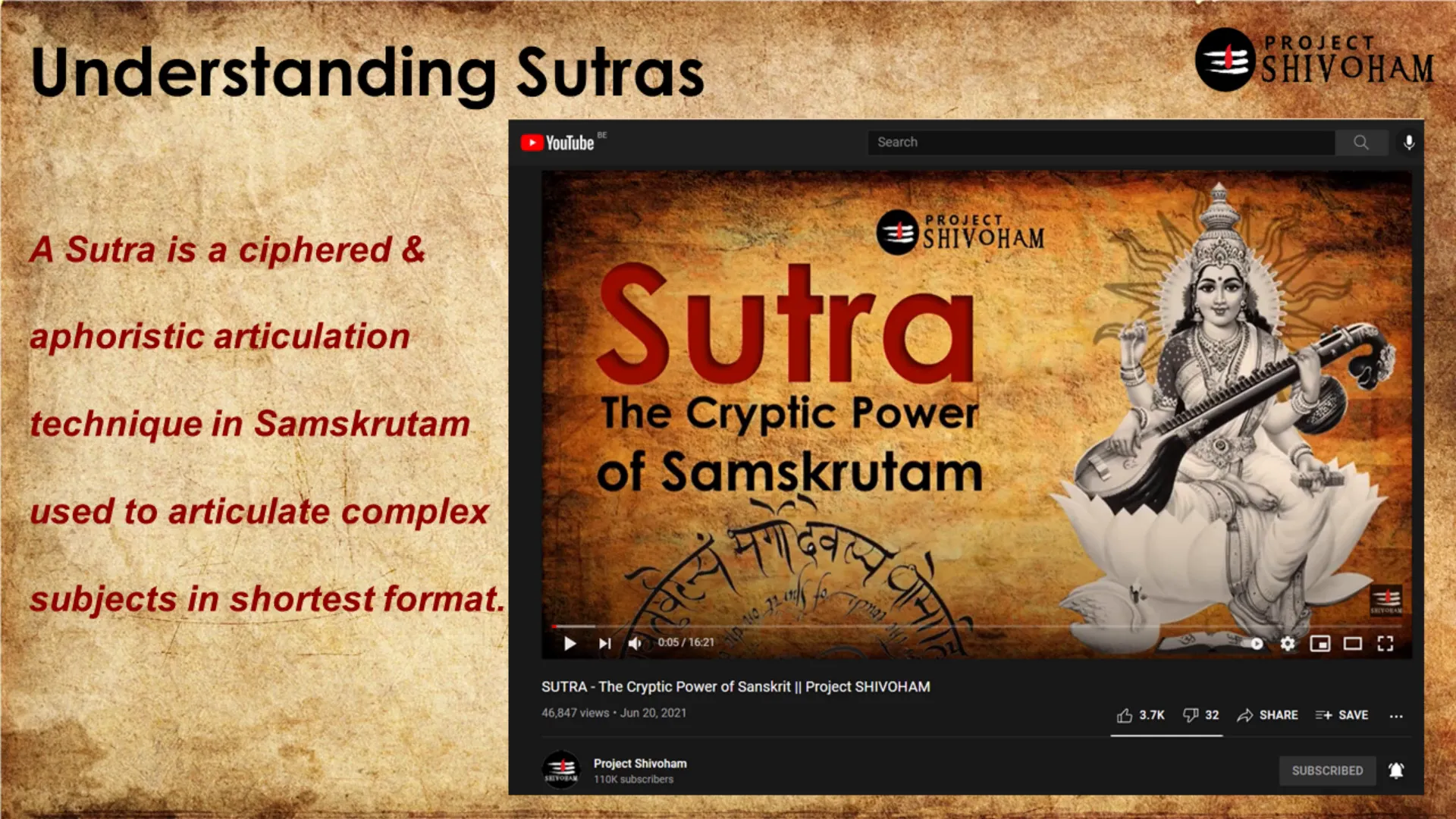
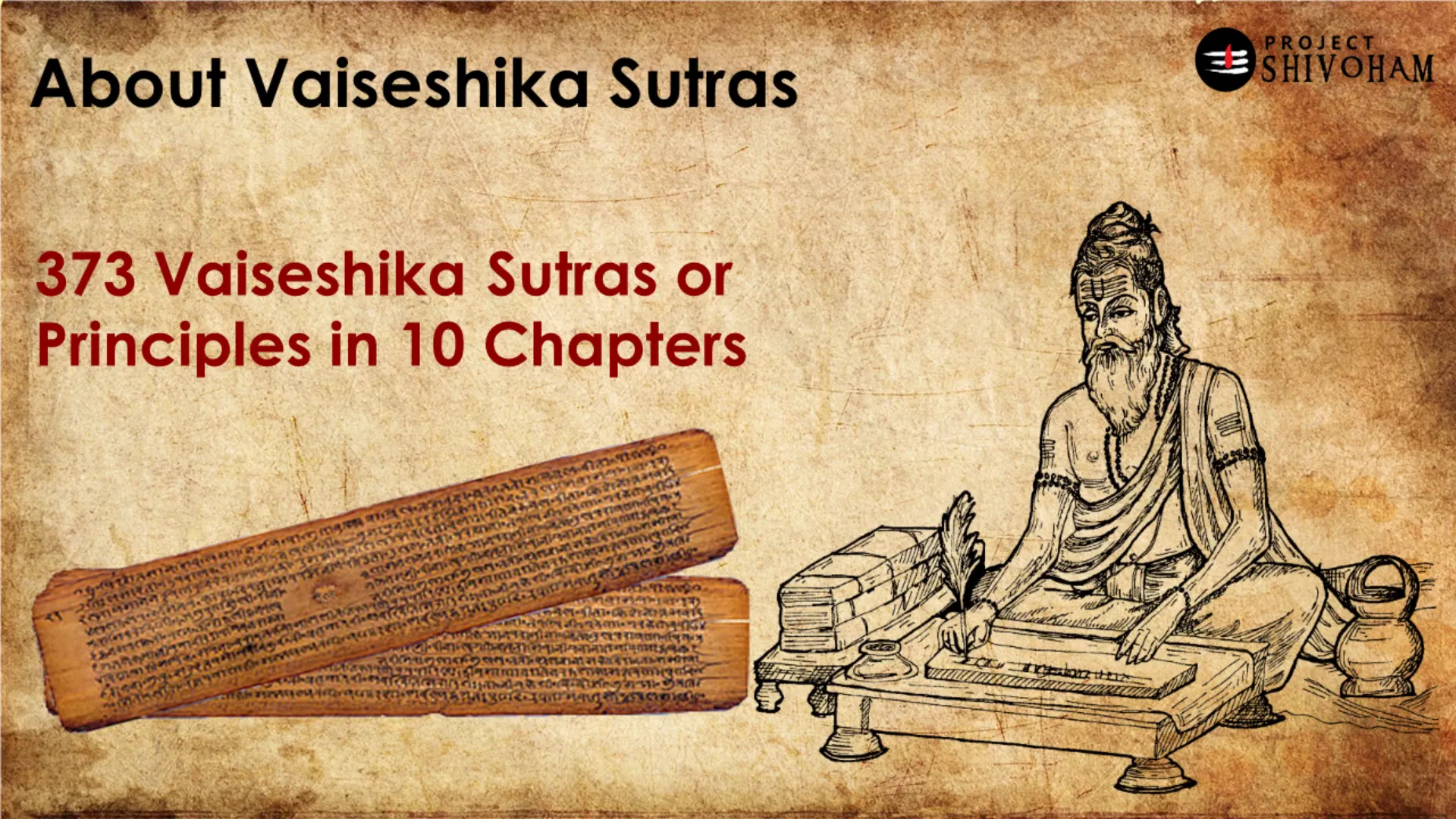
The first chapter lays the groundwork for the entire treatise, focusing on the fundamental elements of nature—earth, water, fire, and air—collectively referred to as dravya. Kanada categorizes these substances as eternal and indivisible, emphasizing their role as the building blocks of all existence.
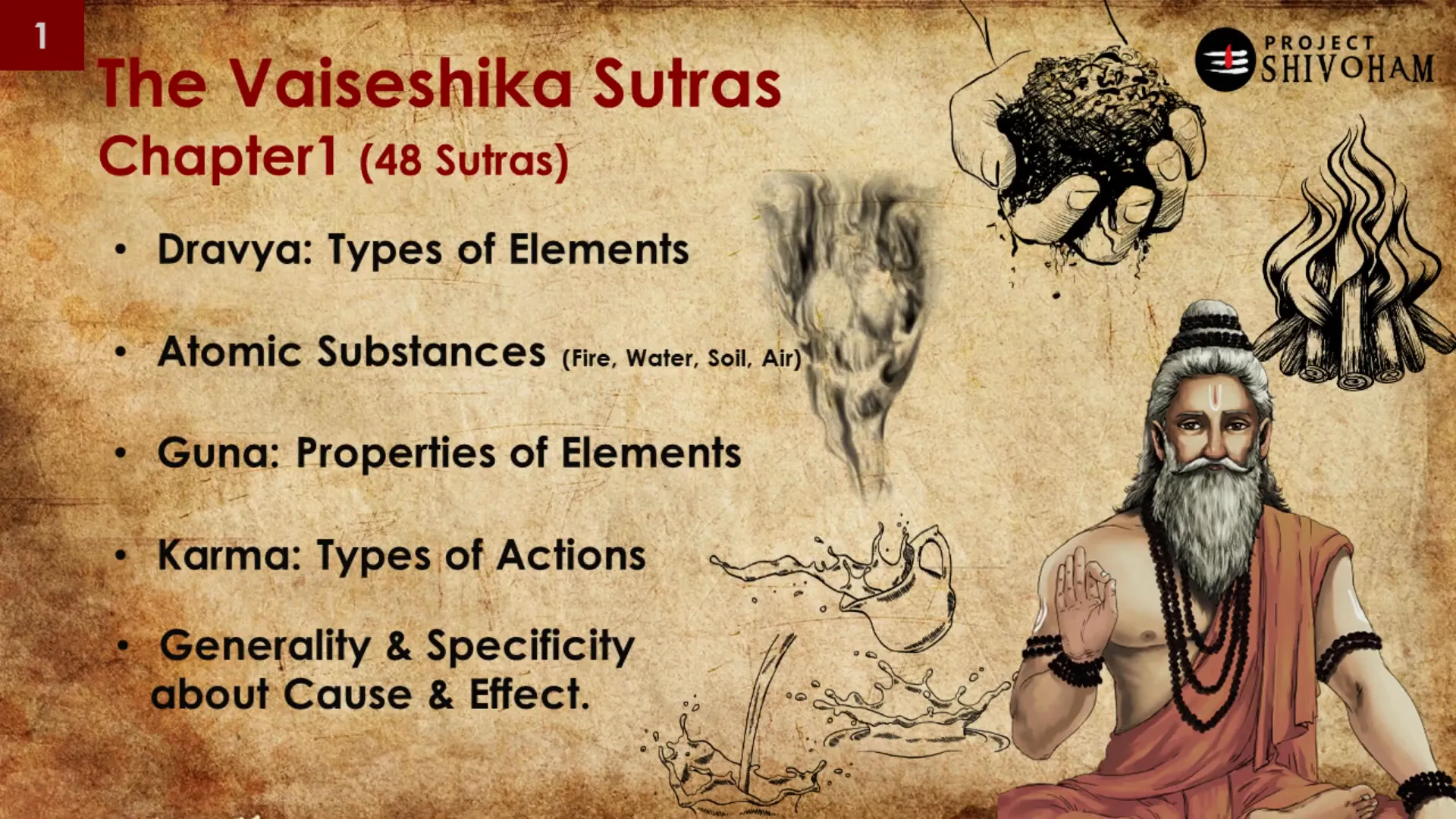
Key Themes of the First Chapter
The first chapter of the Vaisesika Sutras introduces key themes that are pivotal to understanding the philosophy. It discusses:
- Dravya: The types of elements that constitute the universe.
- Guna: The properties of these elements.
- Karma: The different types of actions that result from interactions between these elements.
- Generality and Specificity: The concepts of cause and effect in nature.
These themes are foundational to the subsequent chapters, which delve deeper into the implications of these principles.
Sensory Perception and Interaction with Nature
One of the critical aspects explored in the Vaisesika Sutras is the nature of sensory perception. Kanada emphasizes how humans interact with the environment through their senses—touch, sight, sound, taste, and smell. This interaction forms the basis of knowledge acquisition.
The second chapter elaborates on how sensory perceptions lead to an understanding of the elements of nature. This exploration encourages individuals to engage with the world around them, fostering a deep appreciation for the interconnectedness of all things.
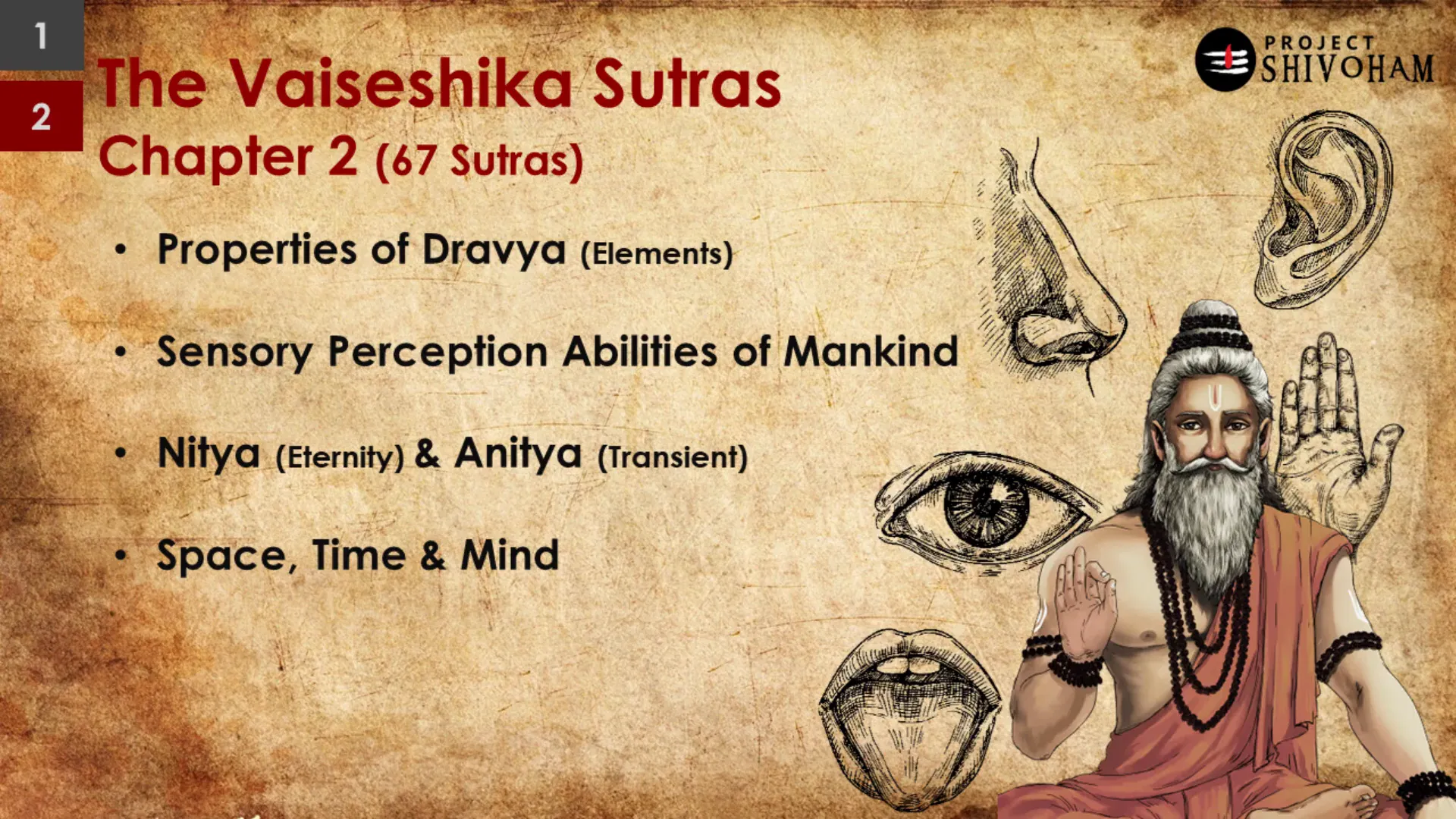
The Importance of Inquiry and Experimentation
The Vaisesika philosophy strongly advocates the importance of inquiry and experimentation. Kanada encourages a scientific approach to understanding the world by questioning the nature of phenomena. This is exemplified in the third chapter, where he poses fundamental questions about the natural world.
Such inquiry is not merely intellectual; it is a call to engage actively with the environment. By observing and experimenting, one can derive deeper insights into the workings of nature, thus bridging the gap between theory and practice.
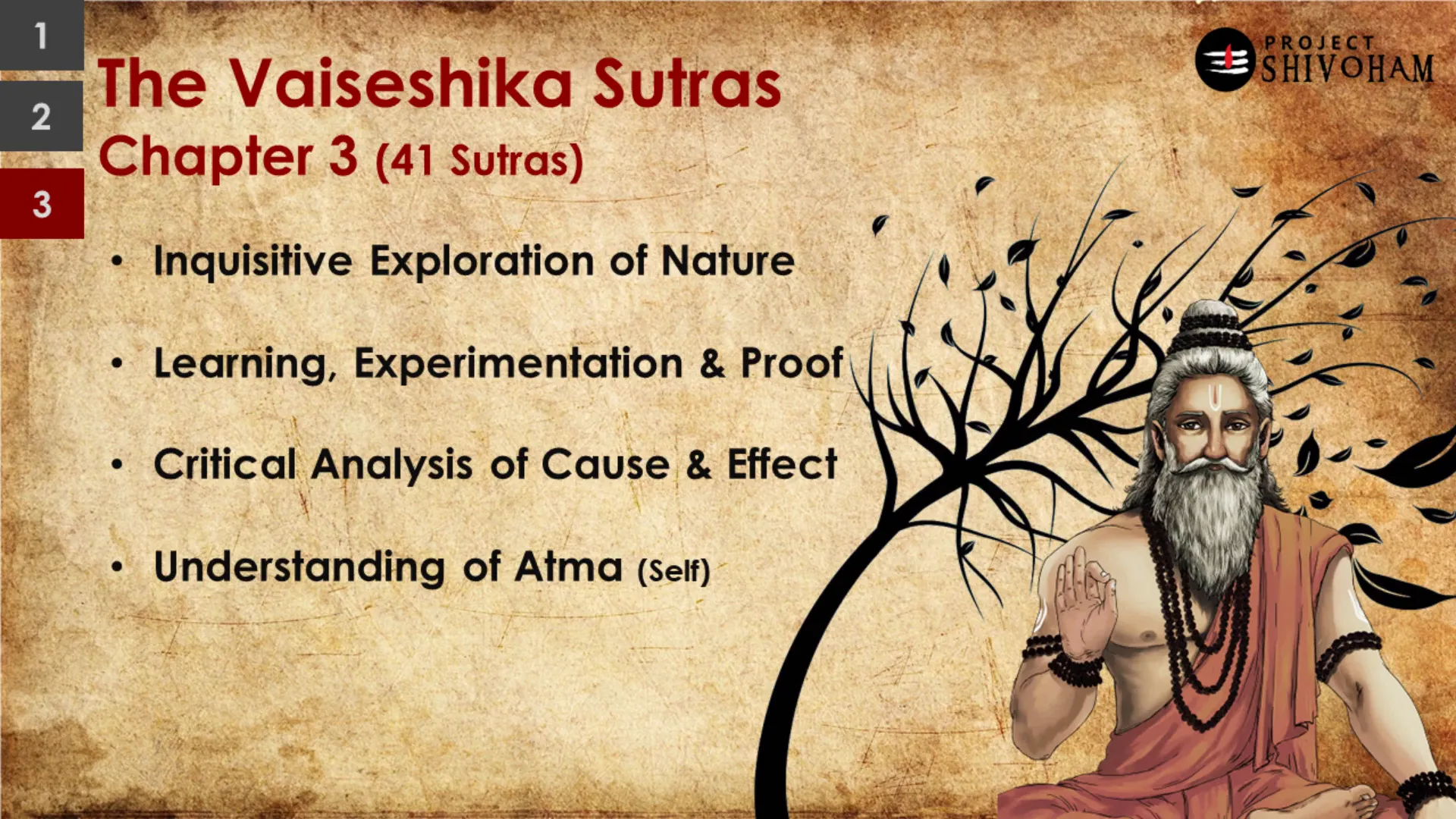
The Concept of Atoms and Eternity
At the core of Vaisesika philosophy is the concept of atoms, or anu. Kanada posits that these atoms are uncaused and eternal, serving as the fundamental building blocks of all matter. This notion challenges the perception of existence as contingent upon external causes.
The fourth chapter introduces the idea that atoms, while indivisible, can combine to form various substances. This understanding of atomicity is crucial, as it lays the groundwork for comprehending the material world in its entirety.
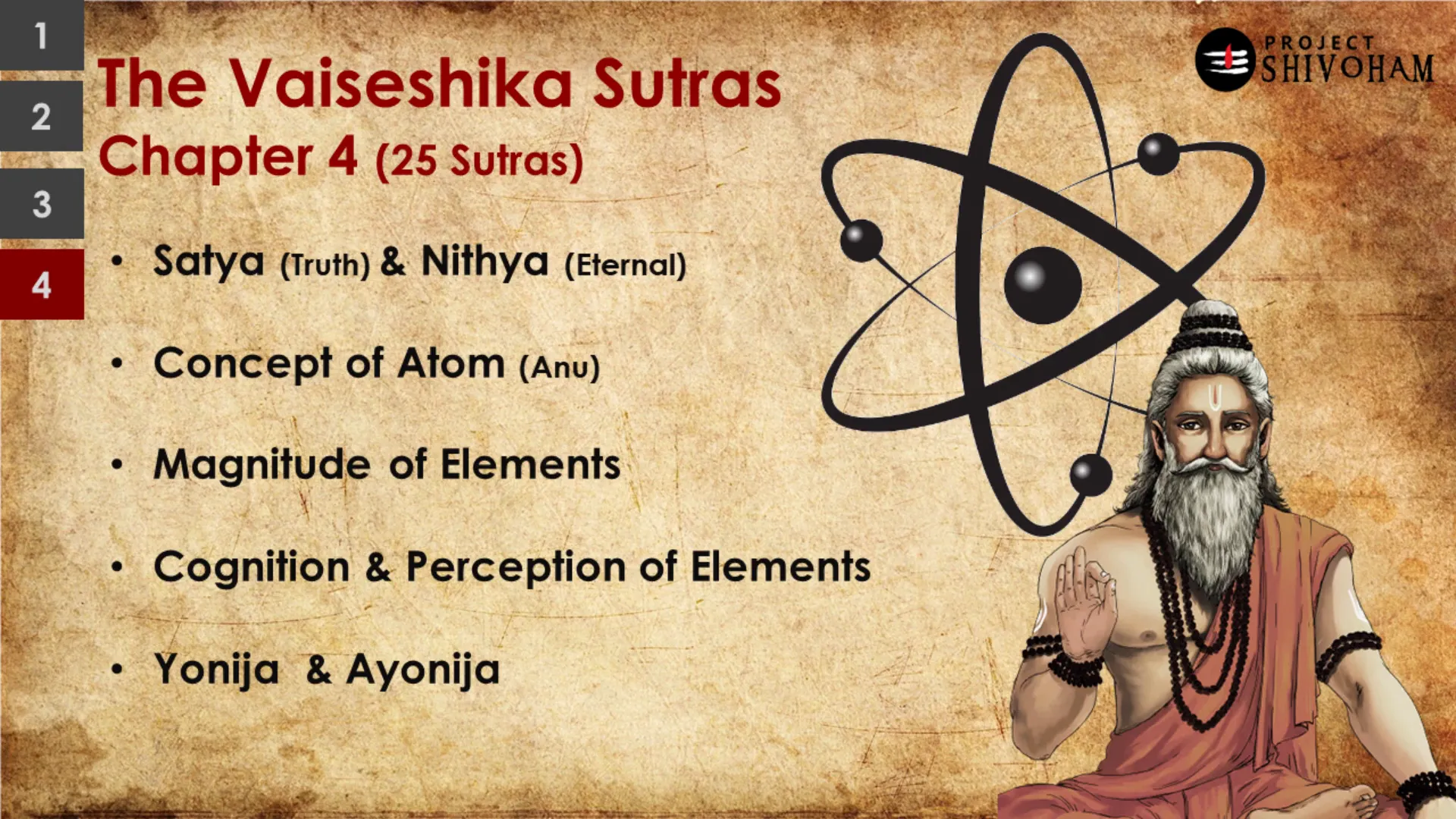
Karma and Gravitational Forces in Vaisesika
In the fifth chapter, Kanada delves into the principles of karma, discussing how actions arise from interactions among the elements. He introduces the concept of gravitational forces, explaining how they govern the movement and behavior of objects in nature.
This chapter illustrates the seamless integration of scientific concepts with philosophical inquiry. The laws of motion and gravity, as articulated by Kanada, resonate with modern scientific understanding, highlighting the timeless relevance of Vaisesika thought.
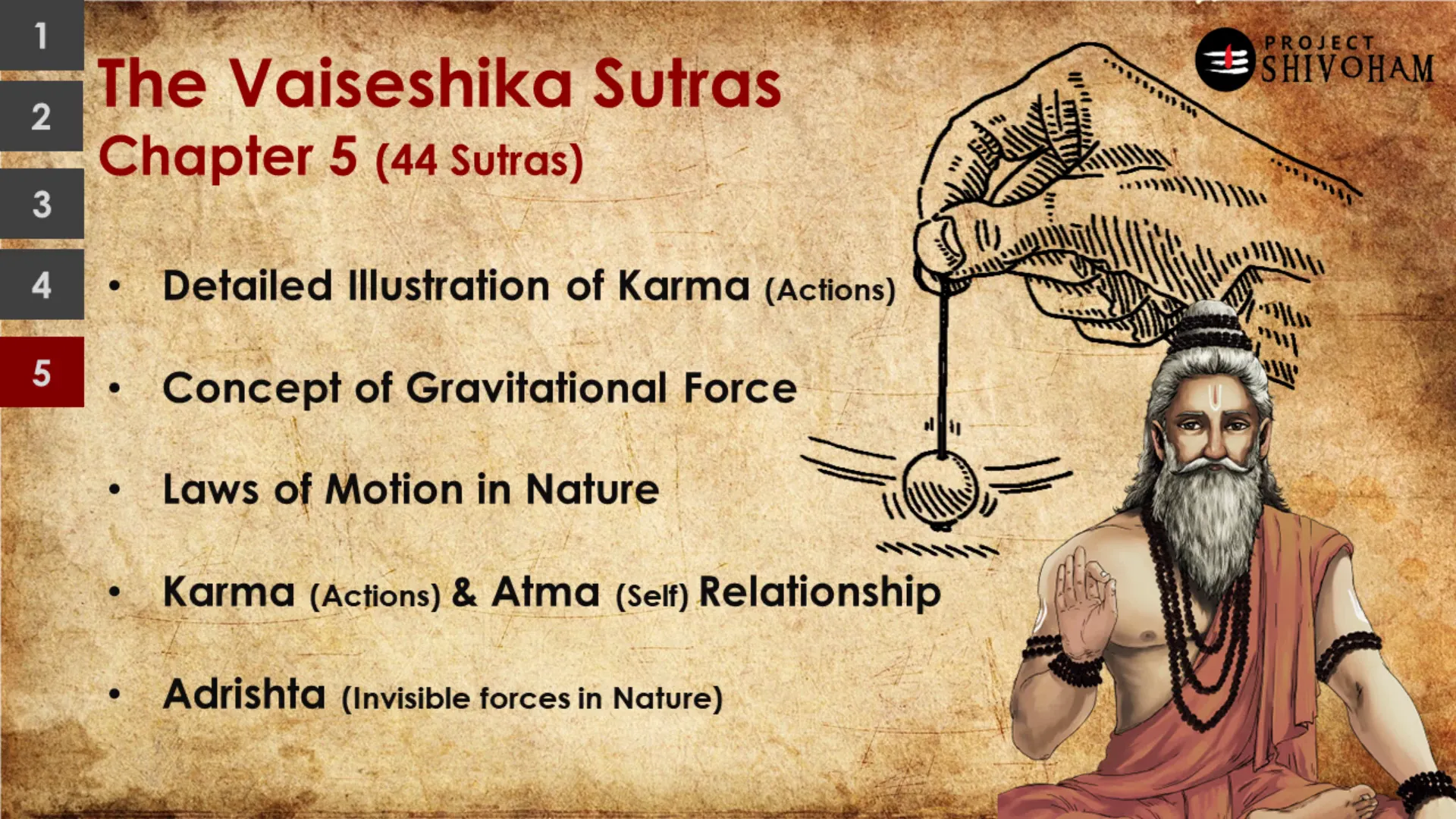
The Interplay of Science and Humanities
Vaisesika Sutras represent a unique blend of science and humanities, demonstrating how philosophical inquiry can inform scientific understanding. This integration is evident in the way Kanada approaches the elements of nature and their properties.
The sixth chapter emphasizes the ethical implications of knowledge and action, encouraging individuals to consider the broader impact of their actions. This holistic perspective underscores the importance of moral responsibility in the pursuit of knowledge.
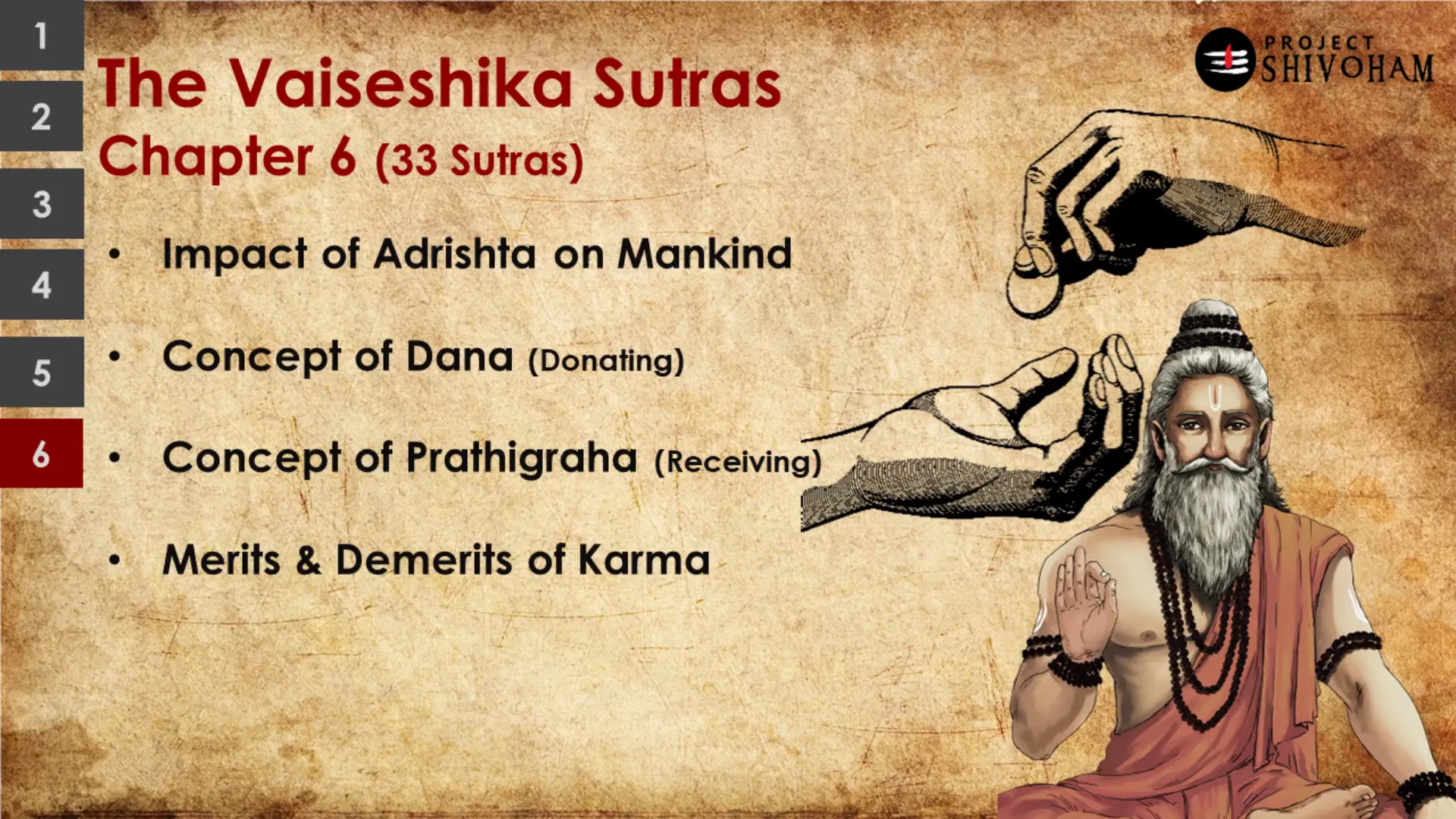
Diving Deeper into the Atom’s Structure
The seventh chapter of the Vaisesika Sutras provides a detailed examination of atomic structure. Kanada discusses properties such as Anutva (atomicity) and Mahatva (magnitude), explaining how these characteristics define the nature of elements.
He also elaborates on the relationship between space, time, and the atom, positioning these concepts within the broader framework of existence. This intricate analysis reveals the sophistication of ancient Indian thought in addressing fundamental scientific questions.
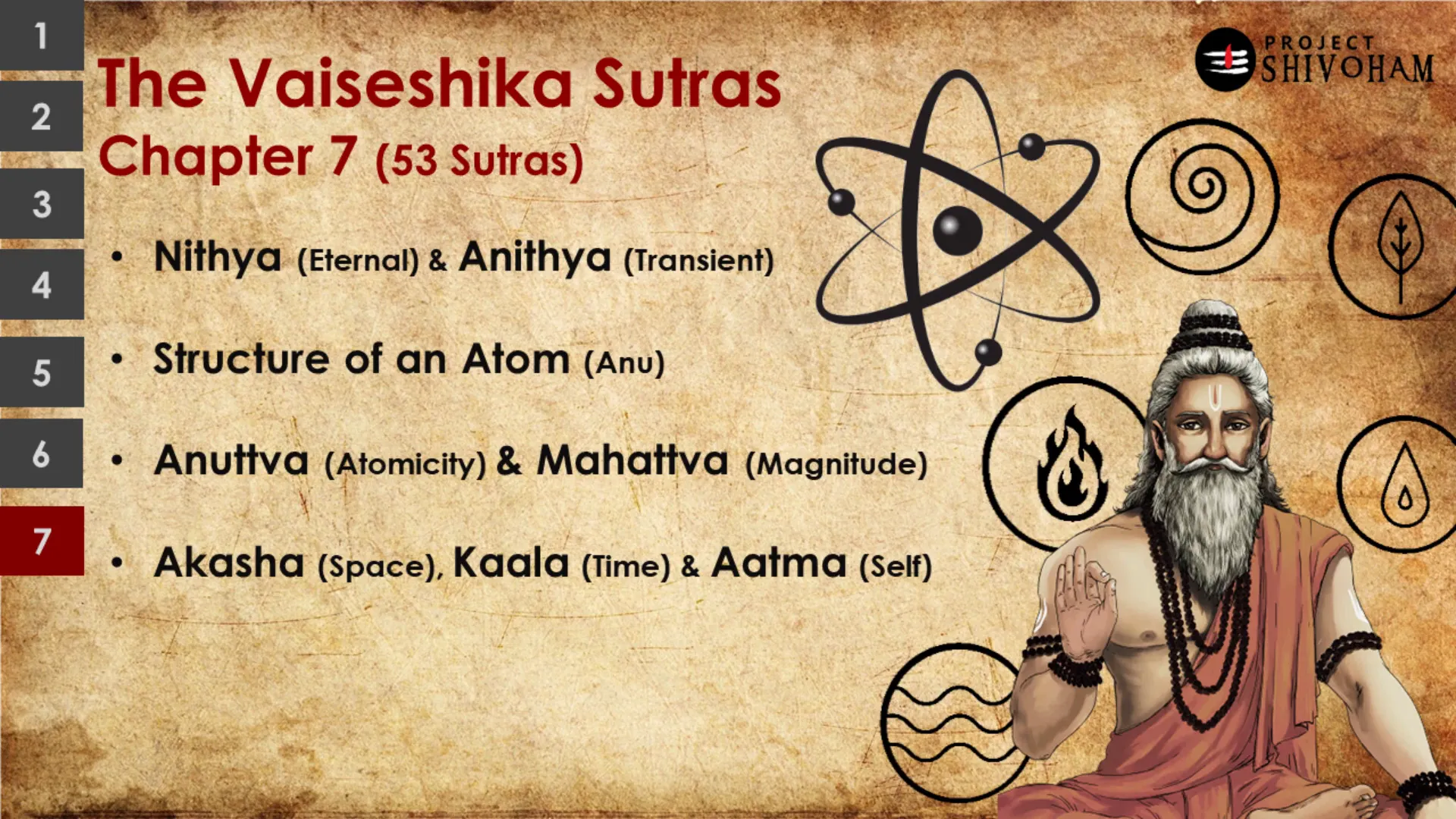
The Philosophical Perspectives on Existence
Understanding existence through the lens of Vaisesika philosophy provides us with a unique perspective. It emphasizes that everything we perceive is a manifestation of atoms, which are eternal and uncaused. This perspective encourages a rational inquiry into the nature of reality, urging individuals to explore their own experiences as a means to comprehend existence.
Vaisesika challenges us to think critically about our surroundings. It asks us to consider not just what we see, but the underlying principles that govern the universe. The philosophical inquiry into existence is not merely academic; it is a pathway to self-discovery and understanding our place in the cosmos.
Existence and the Nature of Reality
The Vaisesika school posits that reality is multi-faceted, comprised of substances, attributes, and actions. This framework allows for a comprehensive understanding of how different elements interact within the universe. It invites us to question the nature of existence itself, considering concepts such as permanence and change.
In essence, Vaisesika philosophy teaches that while the physical world is transient, the fundamental building blocks—atoms—are eternal. This duality of existence challenges us to reflect on the impermanence of our experiences and the enduring nature of the universe.
Understanding the Padarthas: Categories of Existence
The Vaisesika Sutras categorize existence into six fundamental categories known as Padarthas. These categories provide a structured way to analyze and understand the complexities of the universe.
- Dravya (Substance): This refers to the nine types of substances that constitute the universe, including earth, water, fire, air, space, time, direction, self, and mind.
- Guna (Attribute): Attributes describe the qualities of substances. There are seventeen different attributes like color, taste, and touch that help us perceive the world around us.
- Karma (Action): This category encompasses the five types of actions that occur in nature, shaping the interactions between substances and their attributes.
- Samanya (Generality): This refers to the commonalities that can be identified across different substances and their attributes.
- Vishesha (Specificity): This focuses on the unique characteristics that distinguish one element from another.
- Samavaya (Inherence): This concept explains the relationship between substances and their attributes, emphasizing that attributes cannot exist independently of their substances.
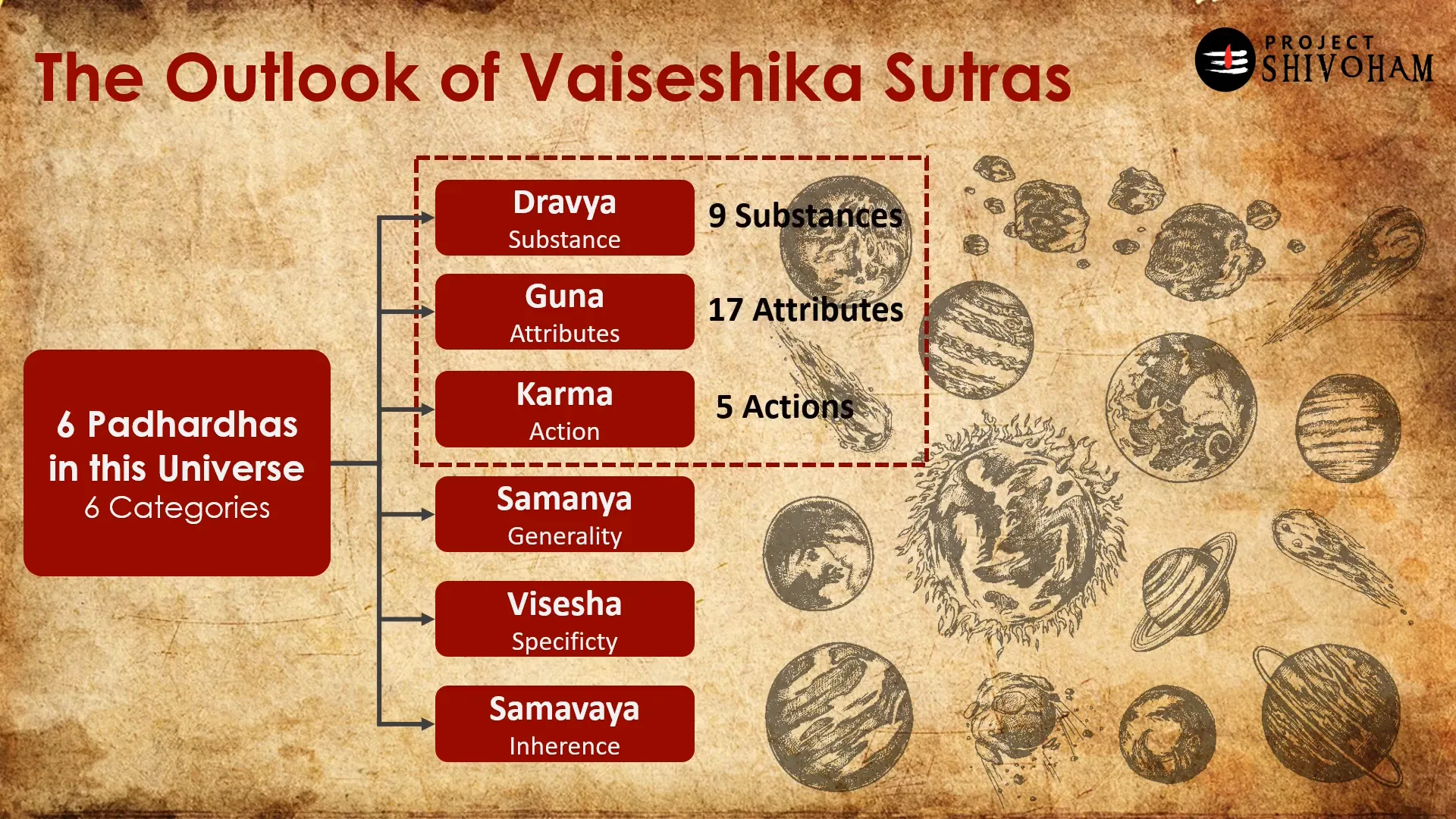
By understanding these categories, one can gain a deeper insight into the workings of the universe and the interconnectedness of all things.
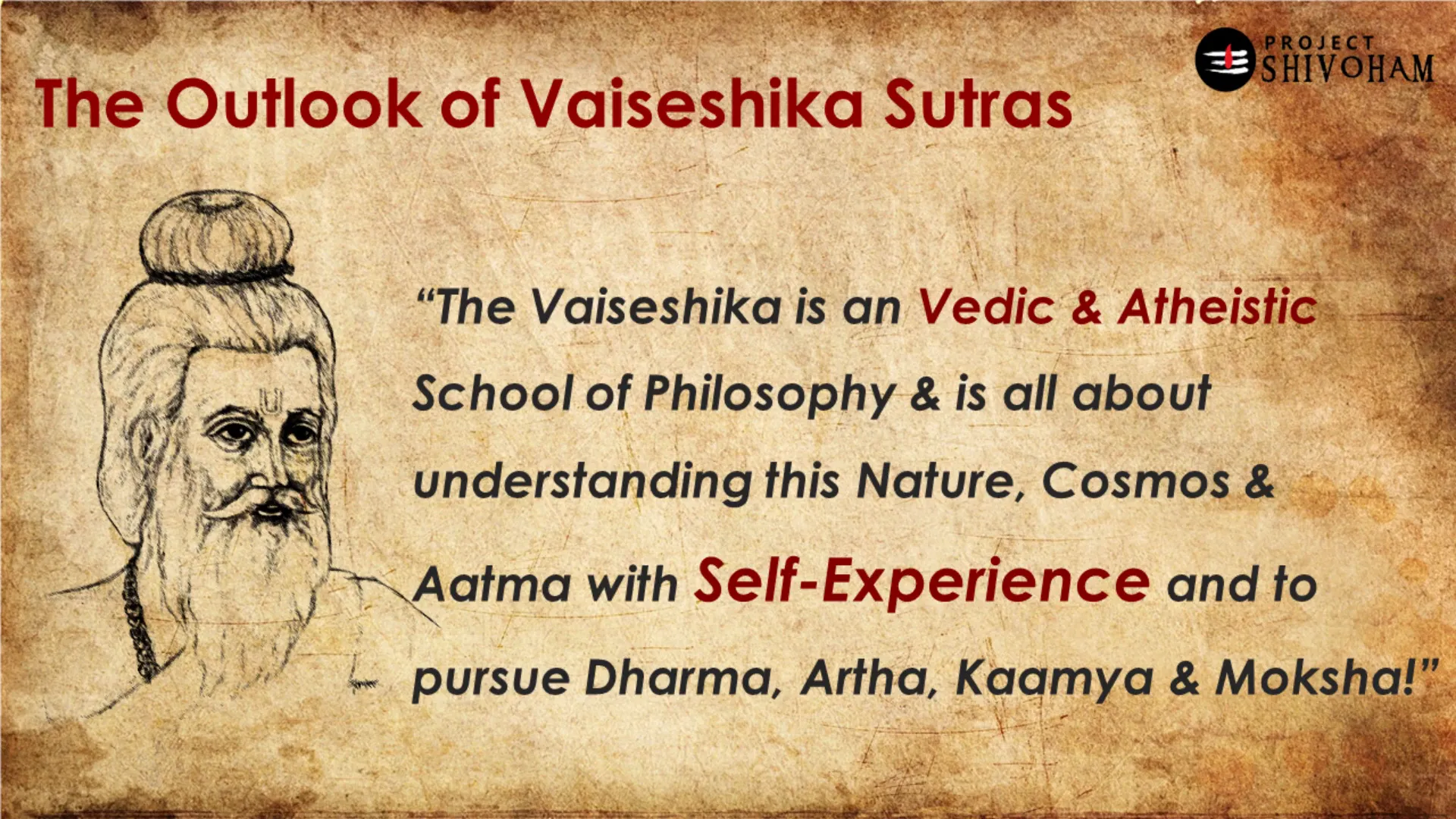
Scientific Concepts in Vaisesika Sutras
The Vaisesika Sutras are not just a philosophical exploration; they also delve into scientific concepts that resonate with modern understandings of physics and metaphysics. Maharishi Kanada’s approach to science was grounded in observation and reasoning, reflecting a profound understanding of the natural world.
One of the key scientific contributions of Vaisesika is its articulation of atomic theory. Kanada proposed that atoms are the fundamental building blocks of matter, which aligns closely with contemporary scientific thought. He identified the characteristics of atoms, describing them as eternal, indivisible, and the basis for all material existence.
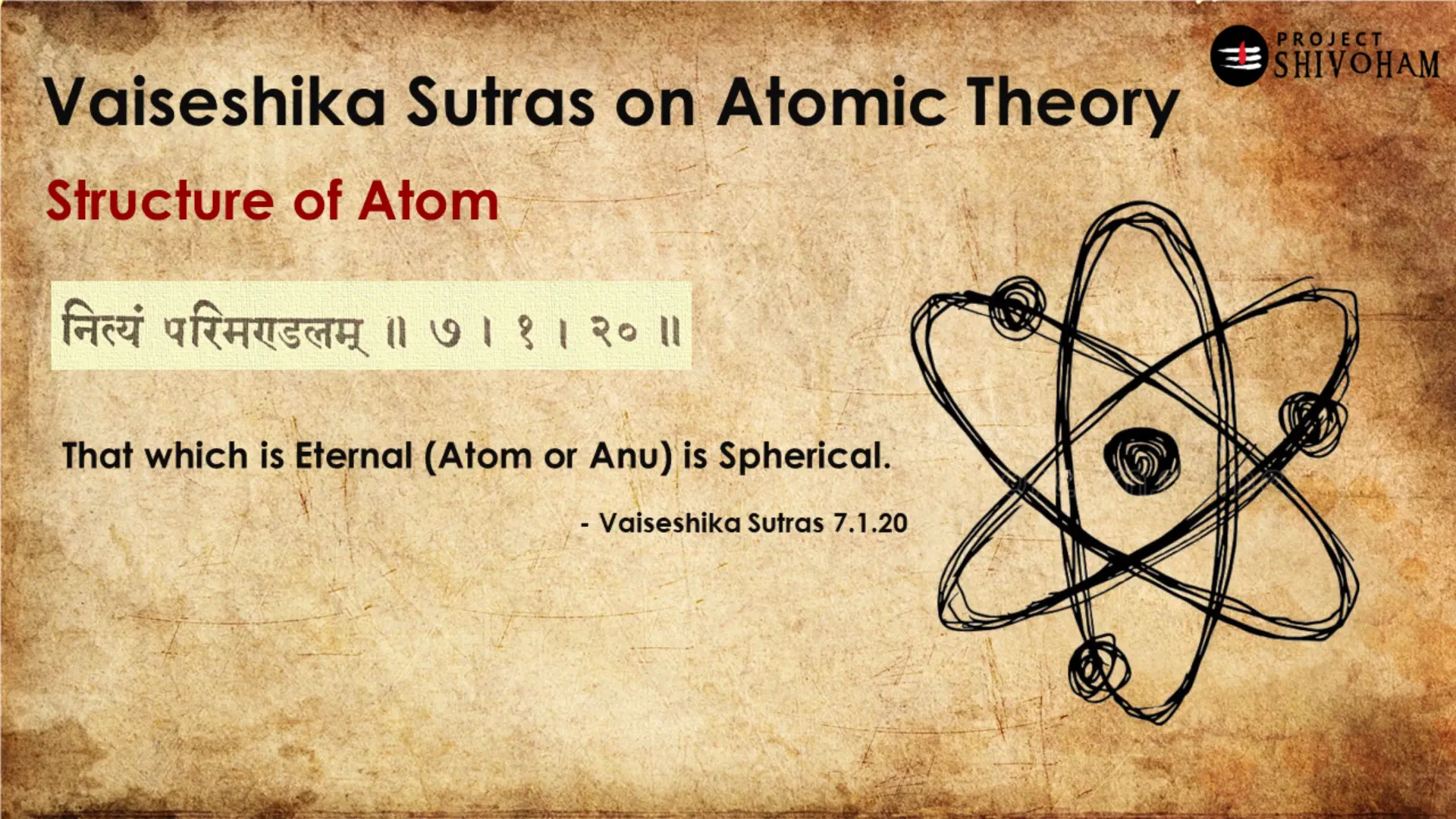
Karma and Gravitational Forces
Another significant aspect of Vaisesika is its discussion on karma and gravitational forces. Kanada explored how actions arise from the interactions of elements and how these actions are governed by gravitational laws. This understanding of motion and force is foundational to both ancient and modern physics.
Through the lens of Vaisesika, we see a sophisticated interplay between philosophy and science, where ethical considerations and empirical observations converge to explain the nature of reality.
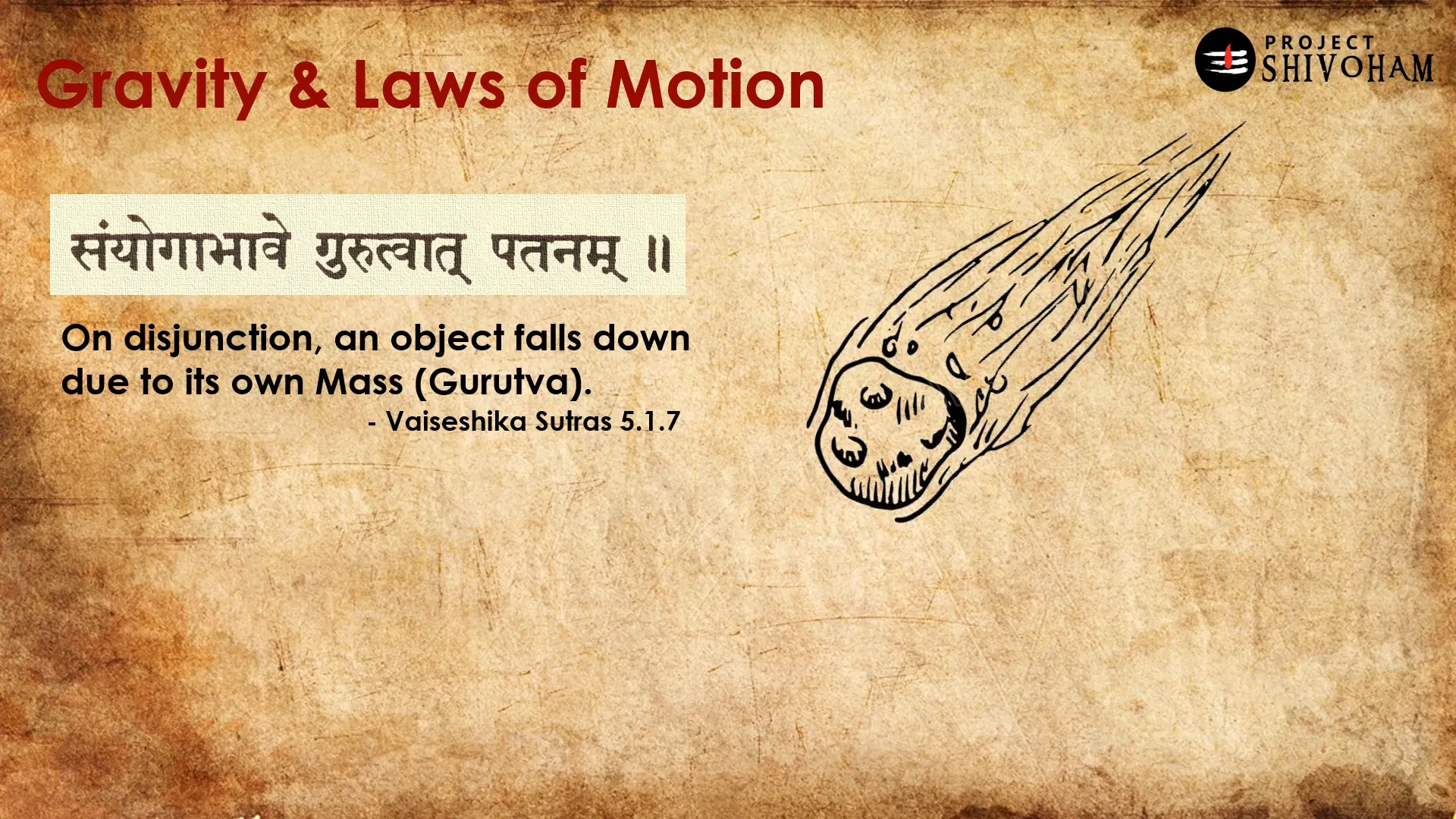
The Bottom Line of Vaisesika Philosophy
The essence of Vaisesika philosophy lies in its advocacy for experiential knowledge. Maharishi Kanada emphasized the importance of inquiry and experimentation in understanding the universe. He believed that true knowledge comes from personal experience and observation, urging individuals to engage actively with the world around them.
Ultimately, Vaisesika teaches that the path to prosperity is paved with experimentation. This principle resonates with contemporary scientific methodologies, highlighting the timeless relevance of Vaisesika’s teachings.
Conclusion: The Relevance of Vaisesika Today
In today’s rapidly evolving world, the teachings of Vaisesika hold significant relevance. The emphasis on inquiry, critical thinking, and experiential learning can guide us in navigating the complexities of modern life. As we face new challenges, the principles laid out in the Vaisesika Sutras encourage a mindset of exploration and adaptability.
Moreover, the integration of science and philosophy in Vaisesika can inspire interdisciplinary approaches to problem-solving, fostering innovation and creativity. By embracing these ancient teachings, we can cultivate a deeper understanding of ourselves and the universe.
FAQ
What is Vaisesika philosophy?
Vaisesika philosophy is an ancient Indian school of thought that categorizes existence into six fundamental categories, focusing on the nature of reality and the atomic theory.
How does Vaisesika relate to modern science?
Vaisesika shares similarities with modern scientific concepts, particularly in its understanding of atomic theory and the laws of motion, emphasizing empirical observation and inquiry.
What are the Padarthas in Vaisesika?
The Padarthas are the six categories of existence in Vaisesika: Dravya (substance), Guna (attribute), Karma (action), Samanya (generality), Vishesha (specificity), and Samavaya (inherence).
Why is the Vaisesika philosophy important today?
Vaisesika philosophy promotes critical thinking, inquiry, and experiential learning, which are essential skills in today’s complex and rapidly changing world.
This article was created from the video THE ATOMIC THEORY in Ancient India || A film on Vaiseshika Sutras || Project SHIVOHAM with the help of AI. Thanks to Aravind Markandeya, Project Shivoham.
